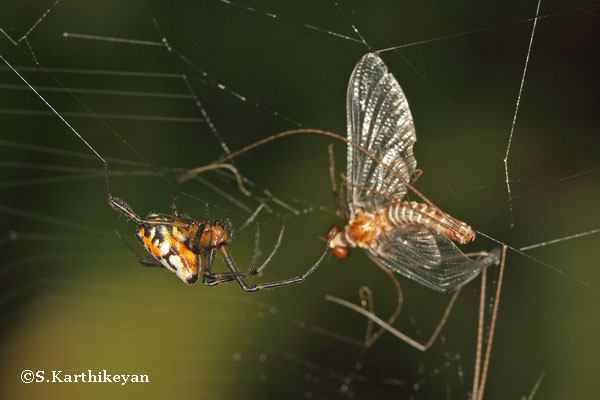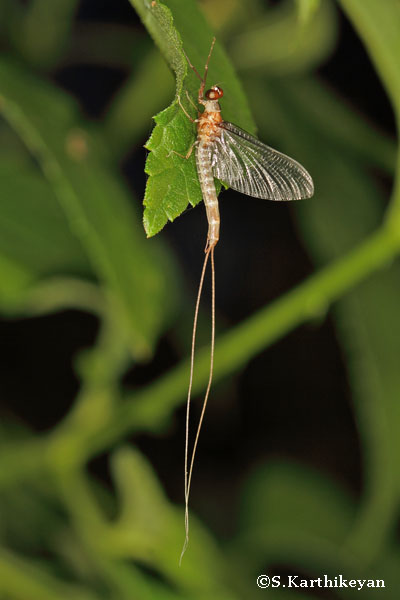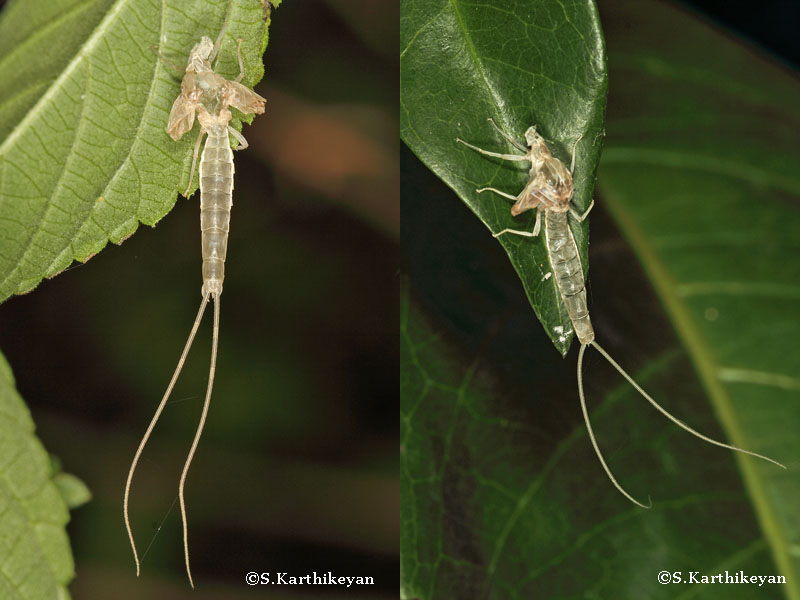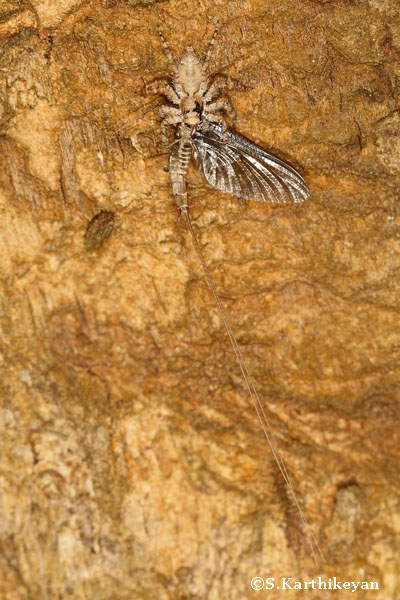Kabini has always sprung surprises on me. The recent visit was no exception. It was mid-November and there was a distinct nip in the air.
I reached Kabini River Lodge late in the evening just in time for dinner. After a quick wash, I headed towards the dining area. Normally this space is well lit. But to my surprise, much of the dining hall was dark. I was left wondering. Was I too early for dinner? Not really.
Initially, I thought that the lights were off to prevent the termites (alates) from getting attracted to them. However, only on closer observation did the answer become apparent – hundreds of mayflies had emerged from the water! Being attracted to light they were congregating near all the lights that were left on. The walls were dotted with mayflies; for that matter they were sitting on virtually everything. For some time now they have been growing from egg to nymph and were waiting for the opportune moment to make their maiden flight and out of water.
Mayflies are very interesting insects and have an equally interesting life-cycle. During mass emergence like the one described above, they mate, lay eggs and die. The females lay eggs on water or other substrates under water. The eggs sink down to the bottom of the water body. Eventually the eggs hatch and nymphs (also known as naiads) come out. They are aquatic and breathe through gills. The time taken for completion of the nymphal stage is very variable both within species and across species. During this time they moult several times as they grow feeding on aquatic organisms like algae besides some debris at the bottom on the water body.
When the time is right, there is mass emergence, they mate and the entire process is repeated. However, the mayflies that have emerged from water often settle down to moult one last time before they become adult mayflies. This makes mayflies unique – these are the only insects that have winged immatures.
As adults they live for a very short time. Hence the order to which they belong to is called Ephemeroptera (ephemeral – short-lived). Many survive for a day or two with some species surviving a little longer. As adults they have rudimentary mouth parts and don’t eat at all.
Next morning I went on a walk on the campus. I saw several mayflies sitting on plants, lamp posts, on the fence, and pretty much everywhere. What was striking though was the moult left behind by hundreds of mayflies. Several mayflies had got entangled in spider webs. Spiders were having a feast – a time of plenty. Perhaps insectivorous bats might have fed on them too during the night.

Mayflies are an integral part of the food chain. Being insects that spend much of their lives underwater, they are fed upon by a host of creatures – fish, frogs, birds, other insects, etc. When they do emerge, they fall prey to a host of terrestrial organisms.
Mayflies spend much of their lifespan as nymphs in fresh water. This makes them good indicators of water quality too. They generally prefer unpolluted waters. And they form a very important link in the food-chain both as aquatic nymphs and as winged adults. The world over, there are about 2500 species of mayflies with about 124 species recorded from India.


